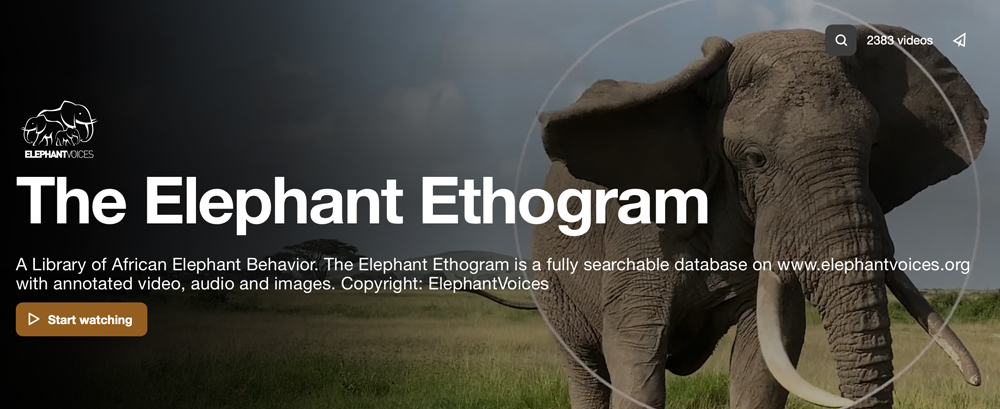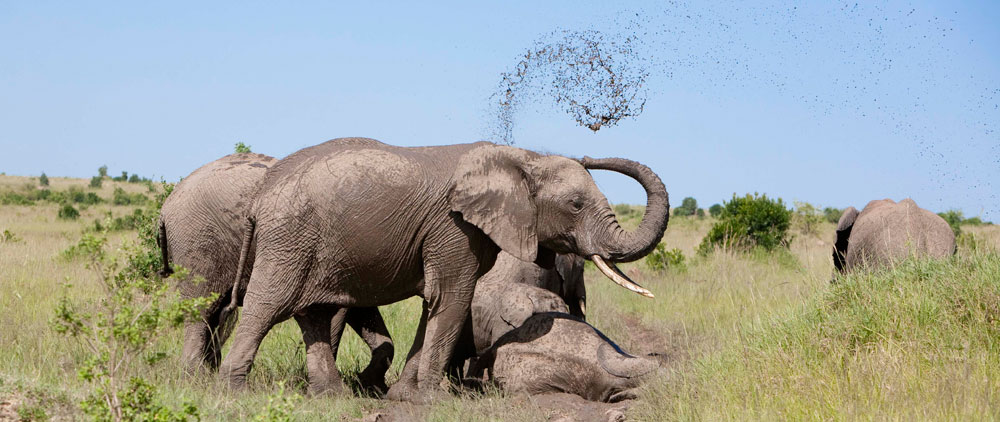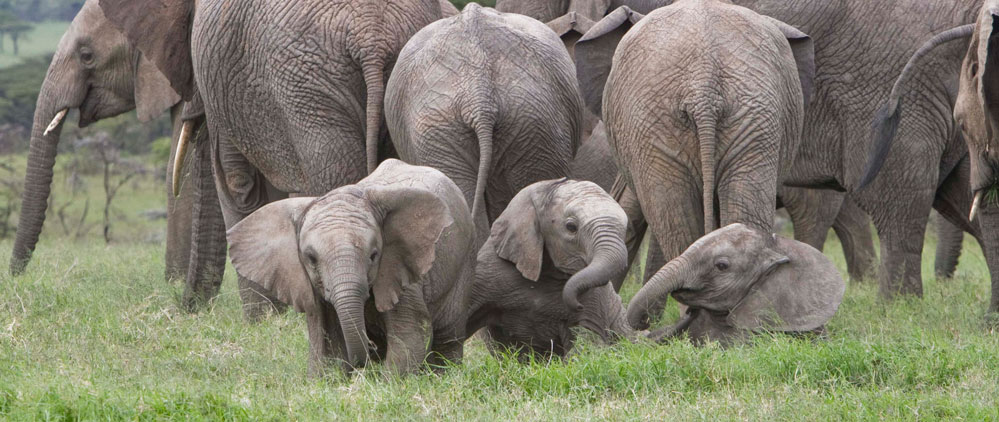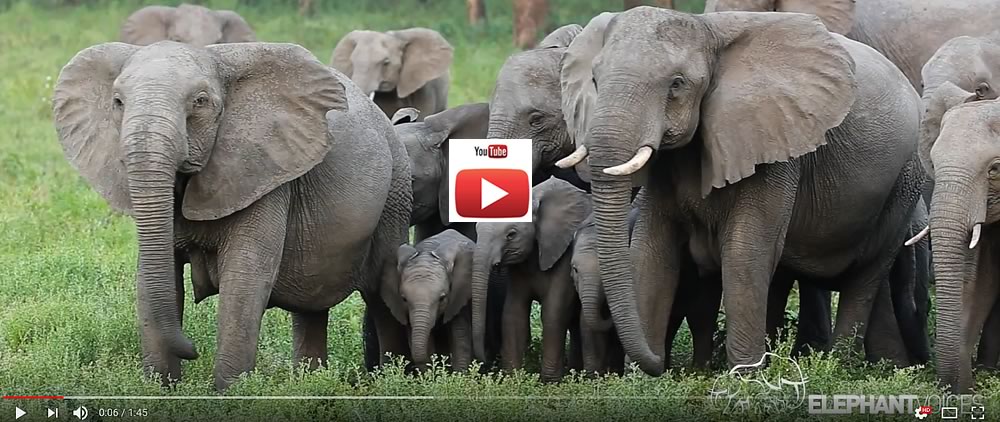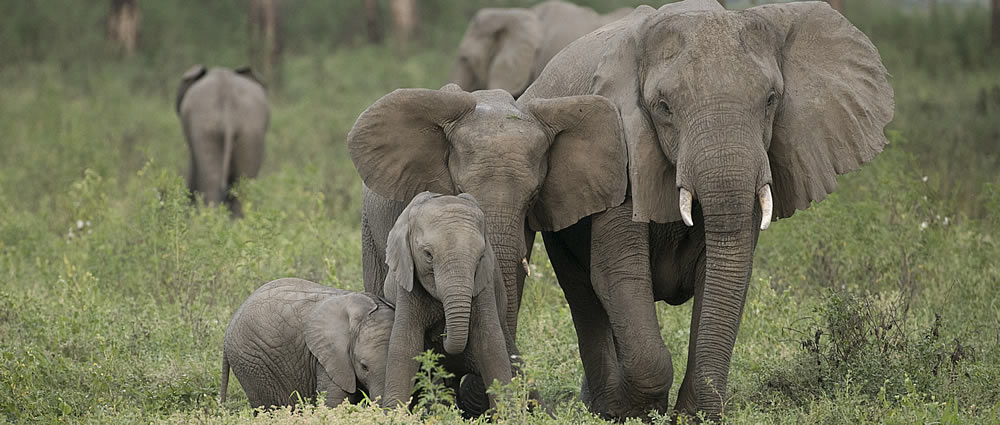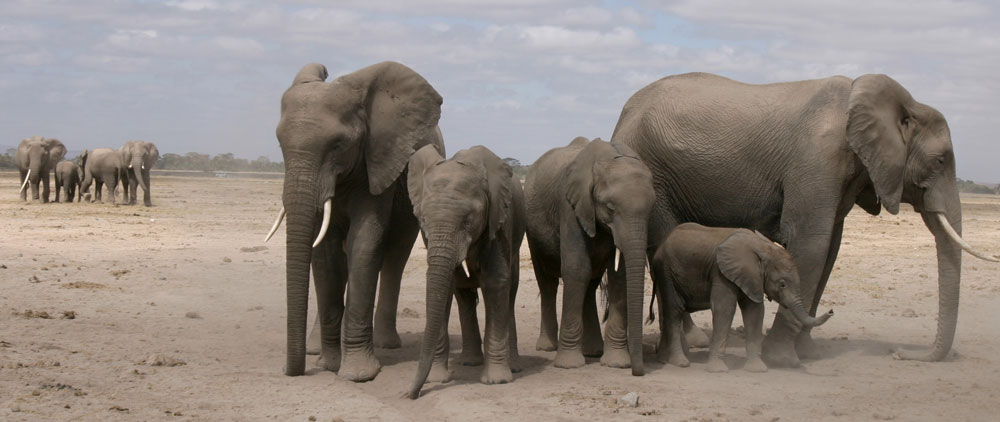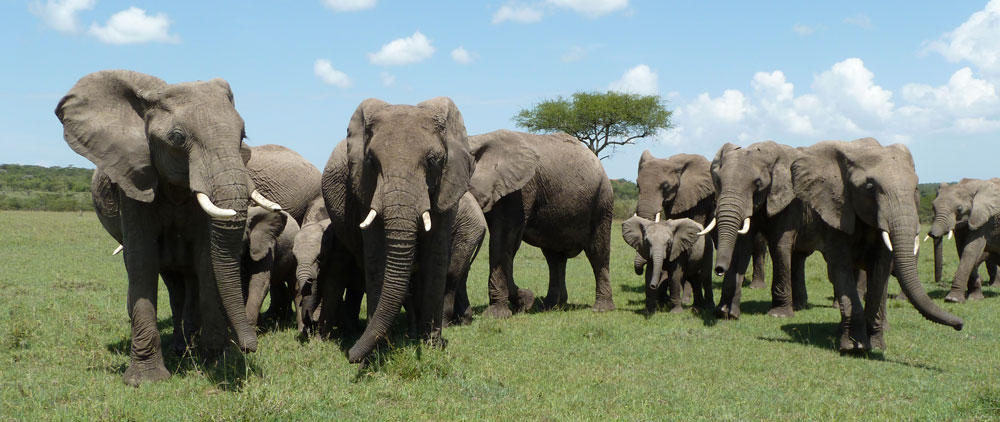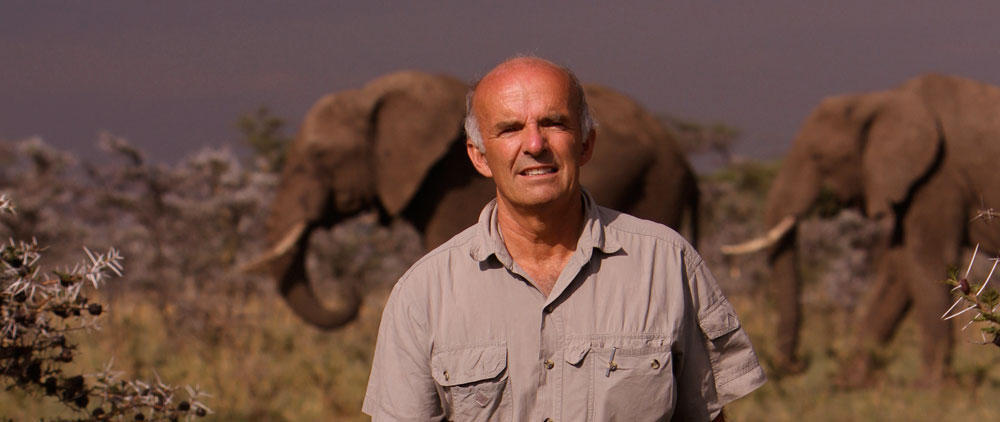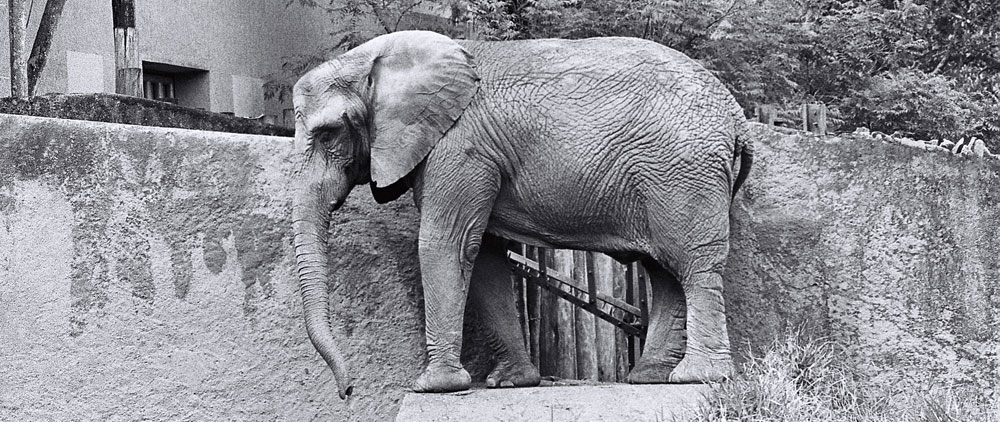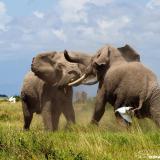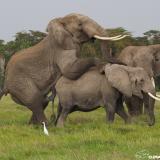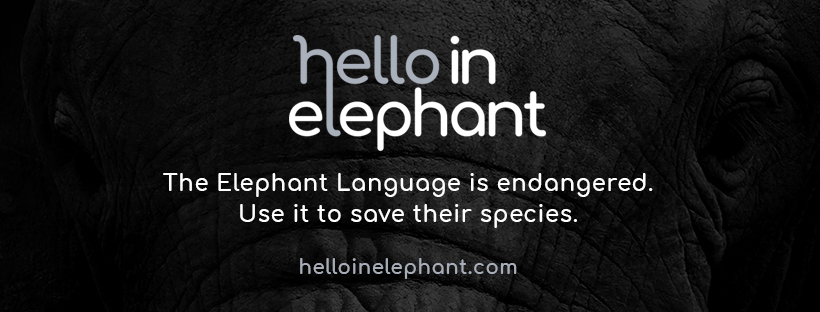elephant sound database
-
Acoustic communication
Acoustic (that is, sound) signals are omni directional (i.e. they travel in all directions) and can be broadcast to a large audience of intended and unintended listeners, including those in view and those hidden from view. Being short-lived and deliberate, acoustic signals are useful for giving information about an immediate situation, rather than about a constant state. Through reflection, refraction and absorption, acoustic signals are degraded by the environment in ways that are often very much greater for high frequency sounds than for very low frequency sounds. Elephants are specialists in the production of low frequency sound and in the use of long-distance communication. Check out some good examples on acoustic communication by elephants in article "What Elephant Calls Mean: A User's Guide" published by National Geographic in 2014, based on the work of ElephantVoices.
The range of sounds elephants produce
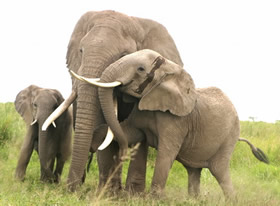 African elephants produce a broad range of sounds from very low frequency Rumbles to higher frequency Snorts, Barks, Roars, Cries and other idiosyncratic sounds. The most frequently used type of call is the very low frequency Rumble. You can search for, listen to and read about numerous calls and other sounds made by elephants on The Elephant Ethogram: A
African elephants produce a broad range of sounds from very low frequency Rumbles to higher frequency Snorts, Barks, Roars, Cries and other idiosyncratic sounds. The most frequently used type of call is the very low frequency Rumble. You can search for, listen to and read about numerous calls and other sounds made by elephants on The Elephant Ethogram: A -
ElephantVoices eNewsletter August 2017 - Say Hello in Elephant!
Dear Friend of ElephantVoices,
For the first time you can Speak Elephant with your friends. You can share your message in a pretty cool way:-).
Together with the David Sheldrick Wildlife Trust, we’re launching Say Hello in Elephant to raise awareness and to showcase elephant communication. Our goal is to reach far and wide - during World Elephant Day, 12th August, and beyond.
In the press release about this campaign ElephantVoices’ Joyce Poole states: "Elephants are awe-inspiring and every moment in their company brings joy. Unlocking their rich emotive communication and gaining deeper insight into their world is fascinating. Yet, elephants and their habitats are under assault, and we urgently need to change hearts and minds.”
Say Hello in Elephant provides a little window into the complex communication of elephants. If you want to learn more, check out our elephant calls database. We are currently working on a major expansion of all our elephant behavior databases, and look forward to show you more during the coming year.
More than ever we need your help to inspire people to do their utmost to stop the ivory trade and to ensure a future with space for elephants. Please consider supporting the work of
-
ElephantVoices research
Listening to the voices of elephants over decades has taught us that communication is the glue that binds the social network of an intelligent species, and its study offers a window into the hearts and minds of elephants. Our collection of observations, recordings and images come from Africa and Asia and form the basis of extensive databases, being used and visited by a world-wide audience.
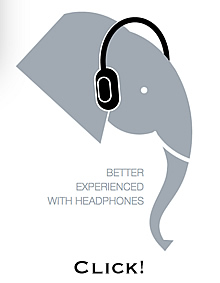 A decades-long study of elephant social behaviour, communication and cognition in Amboseli, Kenya, have been dedicated to the understanding and protection of these remarkable creatures. Our work in the Maasai Mara, Kenya, and Gorongosa National Park, Mozambique, is adding to this body of knowledge and will in due time also be reflected in our online behavioral databases.
A decades-long study of elephant social behaviour, communication and cognition in Amboseli, Kenya, have been dedicated to the understanding and protection of these remarkable creatures. Our work in the Maasai Mara, Kenya, and Gorongosa National Park, Mozambique, is adding to this body of knowledge and will in due time also be reflected in our online behavioral databases.By studying what elephants are capable of understanding and what they communicate to one another, we have a better chance of finding solutions to the many problems that elephants face. In this endeavour we collaborate with biologists all over the world with our online collections forming a unique resource for other scientists and the public.
By clicking on the illustration to the right you will be able to check out an article on National Geographic, giving some insight
-
How elephants communicate
Like all highly social mammals elephants have a well-developed system of communication that makes use of all of their senses - hearing, smell, vision and touch - including an exceptional ability to detect vibrations.
 Acoustic communication takes a look at sound production and hearing in elephants; chemical communication explains how elephants use various secretions and their acute sense of smell to communicate; visual communication looks at how elephants make use of postures and displays and their sense of sight in communication; tactile communication describes how elephants make use of their sense of touch to communicate.
Acoustic communication takes a look at sound production and hearing in elephants; chemical communication explains how elephants use various secretions and their acute sense of smell to communicate; visual communication looks at how elephants make use of postures and displays and their sense of sight in communication; tactile communication describes how elephants make use of their sense of touch to communicate.At one end of the spectrum elephants communicate by rubbing their bodies against one another, at the other end they may respond by moving toward the sounds of other elephants calling, perhaps 10 kilometers away. They convey information about their physiological (e.g. sexual/hormonal, body condition, identity) and emotional state (e.g. whether they are fearful, playful, joyful, angry, excited) as well as communicating specific "statements" about their intentions or desires. In this section we look at how elephants use the different pathways of communication and the actual mechanics of communicating.
You will in the fully searchable database The Elephant Ethogram: A Library of African Elephant Behavior find close to
-
Introduction
The Elephant Ethogram is a uniquely detailed catalogue, or library, of the behavior and communication of African savanna elephants (Loxodonta africana). It is based on decades of ElephantVoices behavioral studies, photographs, and audio and video recordings, the referenced research of other elephant biologists, as well as professional and amateur footage made available to ElephantVoices. You can read more about how elephants communicate within this section of elephantvoices.org. The Elephant Ethogram was launched in May 2021.
 The Elephant Ethogram consists of written and referenced descriptions, video examples, photographic illustrations and, where relevant, audio recordings, of 322 Behaviors, 103 Behavioral Constellations and 23 Behavioral Contexts. There are close to 3,000 media files in the fully searchable Elephant Ethogram including 2,408 video clips (18 August 2021).
The Elephant Ethogram consists of written and referenced descriptions, video examples, photographic illustrations and, where relevant, audio recordings, of 322 Behaviors, 103 Behavioral Constellations and 23 Behavioral Contexts. There are close to 3,000 media files in the fully searchable Elephant Ethogram including 2,408 video clips (18 August 2021).The concept and structural design of The Elephant Ethogram was developed by Joyce Poole and Petter Granli of ElephantVoices. Programming and database maintenance is handled by Derrick Joel, Nairobi, Kenya in collaboration with Petter. The Elephant Ethogram is coded in open source software PhP and MySQL in Joomla! CMS, and is hosted on Cisco servers as a section of elephantvoices.org. Video and audio is hosted on Vimeo and SoundCloud, respectively.
What is an Ethogram?
An ethogram is a comprehensive list, inventory, catalogue or description
-
The Science
Abstract
The Elephant Ethogram: A Library of African Elephant Behavior (TEE) is an ElephantVoices initiative to document the complex and diverse repertoire of African savanna elephant (Loxodonta africana) behavior and communication. In a unique, user-friendly and fully searchable online database, TEE documents the rich postural, gestural, tactile, chemical and acoustic communication and behavior of savanna elephants, including rare, novel and idiosyncratic behavior, as well as that expressed in response to people. The Elephant Ethogram is based on our decades of behavioral studies and our photographic, acoustic and videographic collections from Amboseli National Park and Maasai Mara ecosystem, Kenya, and from Gorongosa National Park, Mozambique, as well as on raw video footage from documentaries filmed in the Maasai Mara and Gorongosa, and on footage of unusual behavior filmed by our colleagues and the general public. TEE is built on ElephantVoices previous online behavior and calls databases (and see also Poole & Granli 2011 and Poole 2011), to which we have added hundreds of new behaviors, included video, and improved the structure and functionality of the database. We intend TEE to be a repository for scientific study and comparison, and to inspire broader interest in elephant behavior, conservation and welfare. We, therefore, include introductory and explanatory information suitable for both


